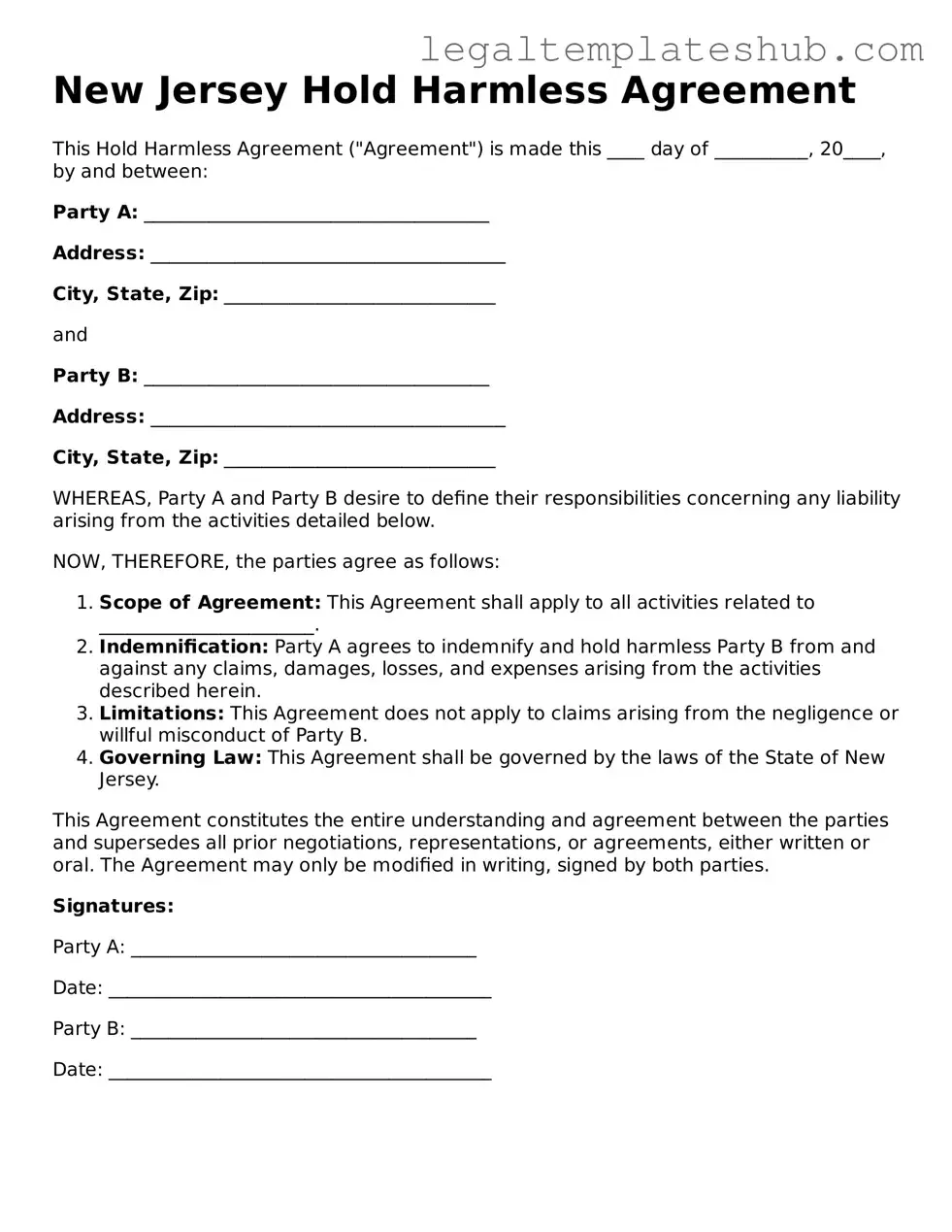Printable Hold Harmless Agreement Document for New Jersey
The New Jersey Hold Harmless Agreement is a legal document designed to protect one party from liability for any damages or injuries that may occur during a specific activity or event. This agreement ensures that one party agrees to assume responsibility for any risks involved, thereby shielding another party from potential claims. For those looking to formalize this understanding, consider filling out the form by clicking the button below.
Access Editor
